In the rapidly evolving landscape of e-commerce, the one-size-fits-all approach to delivery is becoming obsolete. Customers' expectations are soaring — they demand options that fit their unique lifestyles and schedules.
Subsequently, online merchants can’t stick to traditional delivery methods because they risk pushing away customers. Storefronts that adapt the fastest will quickly scoop up significant market share.
Further, every unsatisfactorily met demand on the part of customers is a business opportunity for enterprising merchants. Those that adapt their logistics in time can attract many shoppers who have already expressly stated highly specific and diverse demands for delivery options.
By adopting a range of delivery options — from same-day delivery to secure lockers and in-store pickups — businesses can meet and exceed their customers' rising expectations. So, considering the overwhelming impetus to adapt quickly, let’s examine what multiple delivery logistics look like, why they’re important for merchants, and how to implement them.
Understanding what delivery diversification means for merchants
In 2023, 24% of consumers said they abandoned their carts if the offered delivery options were too slow. Interestingly, the same survey found that 47% of shoppers report abandoning their carts because extra costs, such as shipping fees, are too high.
Merchants need to find a way to appease consumers willing to pay for quick delivery and those who want to wait a little longer and save a little extra. After all, some consumers' most important purchasing motivations surround how quickly, easily, or reliably they can access the product according to their preferred methodology.
Considering the importance of individual delivery preferences, building a degree of customization on the part of the customer into the delivery process is vital for merchants. Customers now expect to be able to obtain their purchase in the exact way they prefer — otherwise, they might look elsewhere for an enterprise retailer that suits their needs more closely.
Bearing the growing importance of delivery method customization in mind, satisfying customers as they place their orders requires the simultaneous implementation of diverse delivery methods.
The most obvious form of shipping customization is offering expedited delivery times like same-day and next-day delivery selections. While these are important methods for modern online shoppers, on their own, they don’t constitute enough options to meet the heightened customization demands expected of digital retailers today.
Options such as in-store pickup for enterprises with brick-and-mortar locations, secure storage lockers, curbside pickup, and configurable delivery dates are gaining popularity among shoppers and prominence among merchants. And automated drone delivery is rapidly taking the logistics industry by storm — making it a vital addition to future-proofed delivery customization choices.
That said, coordinating the implementation of all these critical diversified delivery methods is easier said than done. Good news — the advent of advanced digital logistics solutions now allows enterprises to leverage a complex interplay of technology, customer experience strategies, and robust networks to facilitate delivery diversification at scale.
Delivery diversification is now practically viable for most enterprises with the help of new technologies and software solutions. Considering this new reality, establishing multiple delivery options is critical to maintaining a competitive advantage against highly saturated digital markets — especially moving forward.
Challenges and benefits of diversification for e-commerce retail companies
The importance of diversifying different delivery methods is hard to overstate. For example, in 2022, a survey of consumers found that 76% of respondents reported that a poor delivery experience would either strongly or somewhat affect their decision to patronize the same company again. Therefore, simply going by the numbers, customer retention is inexorably linked to delivery diversification.
Understand that as customer expectations surrounding the delivery of remotely purchased products rise, the perception of a poor experience becomes more stringent. Little inconveniences are increasingly seen as unacceptable to customers, who now have a plethora of online storefronts to choose from when looking for most types of purchases. So, to maintain relevance in the minds of consumers moving forward, enterprises need to raise the bar for themselves.
With this in mind, diversification of shipping and pickup options is key. A customer base wanting to pick up their product in-store might consider next-day delivery to be disobliging — and the inverse is likely also true. This trend is likely to continue in the long term because of the growing sophistication of logistics management software.
Customer expectations regarding product deliveries are only getting higher each year — suggesting that adopting the necessary infrastructure to facilitate agile distribution is a vital component of future-proofing online enterprises. After all, in competitive markets, companies that fail to prepare for and adapt to changing demands are quickly overrun by those that successfully invest in their own future operational needs.
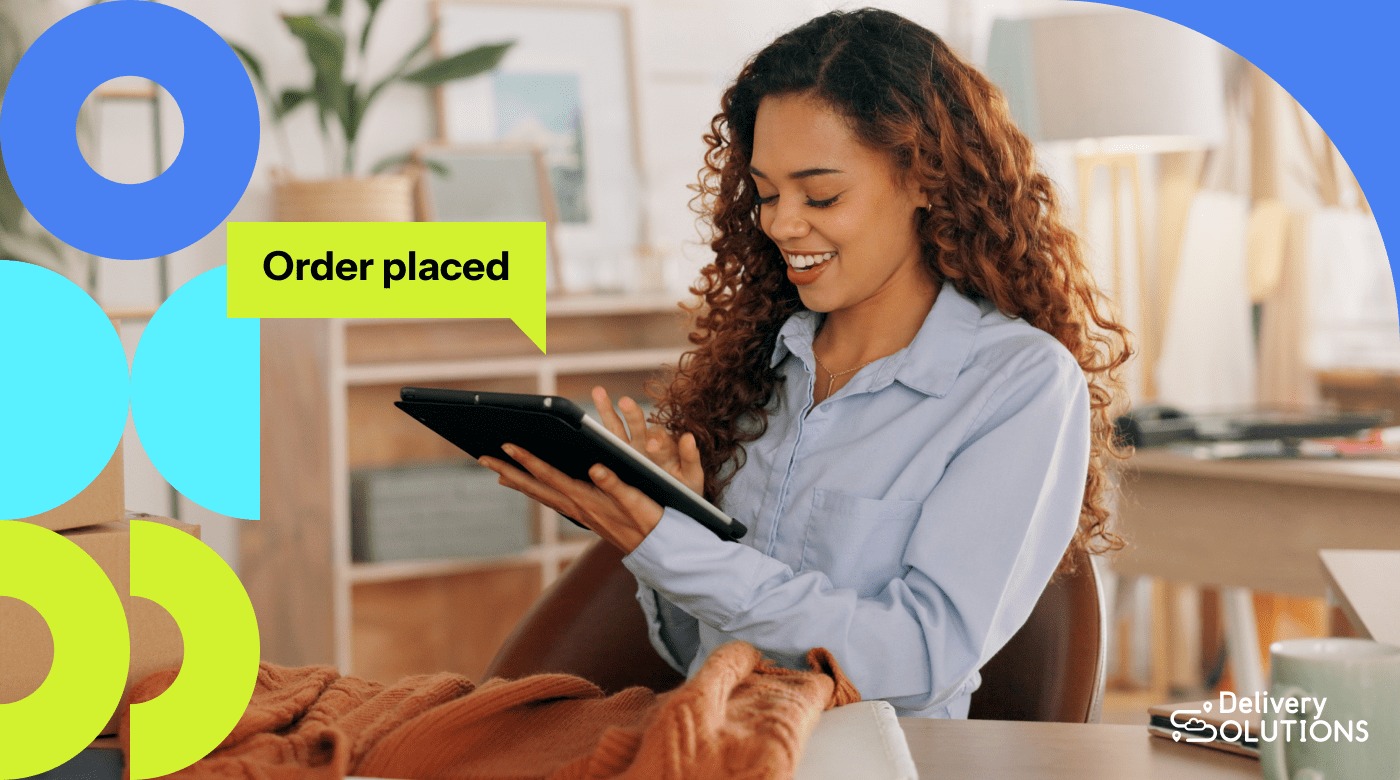
Although, simply throwing money at a complex problem isn’t a viable solution. For example, in 2023, 83% of executives stated that their supply chain technology investments didn’t produce the desired results. So, it’s clear that technology is simultaneously a vital investment for the future and a difficult one to get right.
That said, the solution here is surprisingly easy to implement: technology investments need to be an appropriate solution to the problem they’re trying to solve. For instance, the challenge of delivery diversification is the exceeding logistical complexity required to back an extensive range of customization options. In this regard, the ideal solution that will add value will simplify these complexities rather than overburden logistics managers with unintuitive technical convolutions.
Specifically, platforms like Delivery Solutions facilitate an omnichannel experience for enterprises, allowing them to manage critical components of their supply chain coordination, such as delivery diversification, from one place. Plus, advanced machine learning integrations handle the extensive yet monotonous and time-consuming analytical work required to optimize key operational factors like inventory management and route optimization, often significantly improving customer satisfaction and cost savings.
The result of investing in the right delivery diversification solution can add tangible value in a variety of different capacities, including the following specific benefits:
- Gaining Competitive Advantage: Offering various delivery options differentiates a business in a crowded marketplace, appealing to a broader range of customer preferences and needs.
- Enhancing Customer Satisfaction: Diverse delivery methods cater to individual customer schedules and preferences, leading to a better shopping experience and increased customer base loyalty.
- Increasing Operational Efficiency: Different delivery methods can streamline operations, optimize logistics, and improve resource allocation.
- Generating Revenue Growth: Businesses can potentially increase sales and revenue by appealing to more customers with varied delivery options.
- Cutting Shipping Costs: Diversified delivery methods, like in-store pickup or local delivery, can reduce shipping costs by minimizing long-distance transportation and optimizing last-mile delivery.
Establishing a diversification strategy that caters to customer preferences
In light of the overwhelming potential benefits that delivery diversification can bring, it’s important to understand — in detail — the distinct methods proving popular among consumers.
Specifically, combining the seven following diverse strategies creates a comprehensive set of customization options for online shoppers. So, to learn why each contributes to an overall future-proofed infrastructure, let’s go over the key options enterprises should consider offering based on their potential value adds.
Same-day delivery
Since its inception, Same-day delivery has emerged as one of the most popular options, and frankly, it’s easy to see why. The ease and convenience of ordering a product online only to see it show up just a few hours later is hard to beat, so more and more retailers are interested in decreasing their delivery timelines.
Put simply, consumers have made it resoundingly clear they’re more likely to purchase from enterprises with short delivery windows. When asked, 68% of customers reported that shorter delivery windows were determining their purchasing decisions.
Plus, same-day deliveries cater to impulse purchasing in a way that perfectly augments the effortlessness of online shopping. Therefore, merchants can cut into whole new slices of their market or expand the lifetime value of their existing customers simply by building in same-day delivery options.
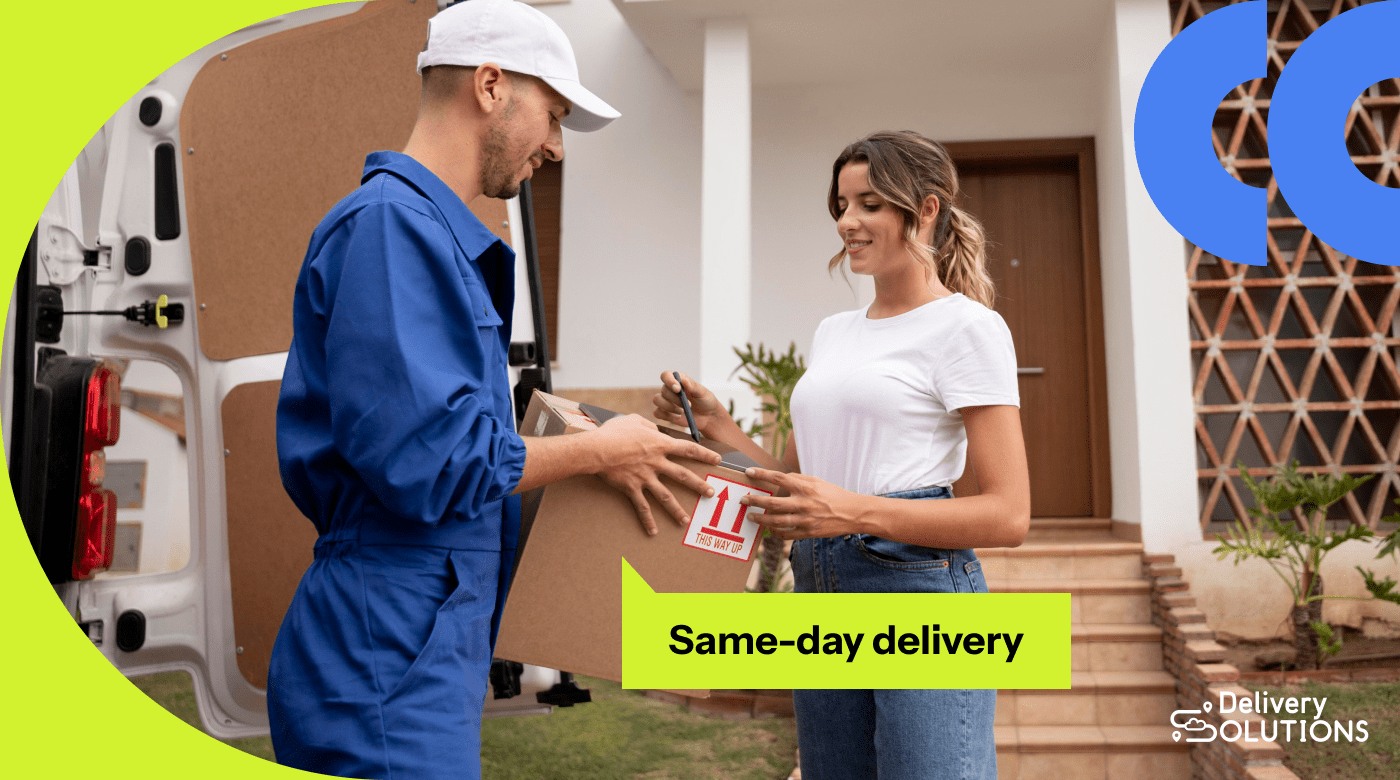
Of course, the same-day service can be positioned as a premium option, allowing merchants to reduce some of the additional logistical costs of streamlined deliveries. Pricing might even be dynamic, based on the consumer’s location and other factors like seasonal fluctuations in demand. Technologies like machine learning can help pinpoint the right price for the service based on these factors.
Now, pulling off same-day deliveries takes highly optimized delivery processes. So, enterprises that want to implement this option must look into establishing local warehouses and efficient digital logistics.
Next-day delivery
Like same-day deliveries, next-day options are highly popular consumer preferences and thus an excellent value add for merchants across sectors. In 2022, 37% of consumers were more likely to purchase products when offered a next-day delivery option — irrefutably proving the potential gains an enterprise can engender by simply integrating this shipping customization option.
And while next-day delivery might not be as fast as same-day options, it is often a more practical alternative for merchants under certain circumstances. Next-day delivery strikes an appealing balance between the speed consumers demand and the potential inventory and logistics challenges that might make same-day options unviable.
Essentially, just by slowing down the delivery window by a day, enterprises can ease the potential burden on their shipping partners and networks without eliminating the sales opportunities that quick deliveries present. In this way, a slightly longer lead time creates an excellent compromise for storefronts that need it.
Of course, as customers place such importance on the reliability of deliveries when making repurchasing decisions, making dropoffs in the promised window is vital. So, if an enterprise offers same-day delivery but consistently falls short of this remarkably high bar, customers will likely be unsatisfied. In this scenario, offering a next-day delivery option instead is a much more sustainable and fruitful option in the long run.
Secure lockers
One of the newer, perhaps less ubiquitous, delivery options comes in the form of secure lockers. Despite the relative novelty of this delivery option, its projected growth is staggering. The smart parcel locker market is skyrocketing at a projected CAGR of 13.84%, putting it on the trajectory to reach $1,274.291 million in 2028.
Secure lockers are storage units located at convenient spots around a specific area where customers can congregate. They allow enterprises to cut last-mile delivery costs by amalgamating stops from multiple addresses into one location.
Secure lockers are just beginning to firmly cement themselves as a vital component of shipment customization. They are, therefore, one of the best diversification integrations for companies looking to future-proof their shipping infrastructure.
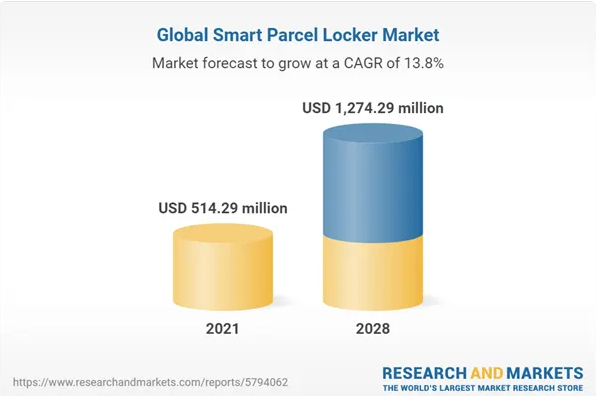
Some might wonder why this method is gaining popularity, considering other potential options to bring the products right to customers’ front doors. Well, the foremost reason is security. These lockers prevent porch piracy, a major issue for online shoppers — depending on their location.
Leveraging tools like Delivery Solutions also augments this approach to mitigating theft, especially for high-value products in high-risk areas. Advantages such as real-time tracking and alerts and predictive analytics to identify theft-prone locations help ensure packages reach the customer. At the same time, customer-controlled delivery windows and geofencing technology further ensure packages are delivered safely.
Furthermore, lockers provide a 24/7 pickup option that doesn’t require coordination with delivery services. So, consumers can schedule a convenient pickup time for sensitive items they can’t leave sitting out all day or put off the delivery date of the purchase when they’re out of town.
In-store pickup
In 2023, over 65% of customer complaints regarding last-mile delivery surrounded the same three factors. Namely, the three most prominent complaints were damaged items at 20.9%, missing items at 22.4%, and delayed deliveries at 24.8%.
These numbers suggest that delivery issues are most customers' foremost concern and primary frustration. Yet, while it’s possible to improve delivery systems and streamline logistics to reduce damaged, missing, and delayed deliveries, it’s not entirely possible to eliminate such inevitabilities.
That said, there is a way to circumnavigate these issues altogether. Namely, in-store pickup options can prevent the potential costs and effort that go into last-mile logistics while mitigating the prominent complaints surrounding door-to-door deliveries.
This option also boasts the advantage of immediacy, allowing customers to access their purchase right after they check out. One of the key additional benefits of in-store pickup is that customers are drawn to the store’s physical location — potentially driving up sales through impulse purchasing.

Finally, getting online customers in physical locations also allows enterprises to offer personalized customer service, thus increasing the potential value of individual employee overhead. Not to mention that this brings the human element of shopping into play, potentially helping drive up customer satisfaction and loyalty.
Although, perhaps the most enticing aspect of in-store pickup is that all these benefits come at a strikingly reduced cost compared to other delivery methods.
Curbside pickup
Most people know that the stratospheric rise in the popularity of curbside pickups coincided with the COVID-19 pandemic lockdowns in 2020. Despite the unusual circumstances that prompted the quick adoption of this delivery method, it seems that it’s here to stay because, in 2023 alone, curbside pickup saw a 37% increase in popularity.
Like in-store pickup options, curbside delivery practically eliminates wait times for online orders. And it’s slightly more convenient and streamlined for the customer, making it more popular among those who want a quicker transaction process, reduced contact with staff and other shoppers, or prefer not to enter the store for any reason.
Of course, this option doesn’t offer the benefit of improving customer foot traffic in physical stores. However, it does reduce last-mile logistics costs. It offers a balance between in-store pickup and secure locker options that are perfect for consumers who want both high-speed delivery and increased convenience, all without the potential increased fees that come with same-day or next-day deliveries.
In this regard, integrating curbside pickup options is an excellent way for enterprises to round out their customization options with low-cost alternative delivery options.
Configurable delivery dates
Over the past few decades, the vast improvements in digital communication technologies have left no sector untouched; shipping and logistics are no exceptions. Customers now expect to know when their package will arrive and where it’s at throughout its journey. Specifically, about 68% of customers expect to know where their package is throughout the delivery process.
Of course, there are practical reasons backing these market conditions. Some want to be at home when a package arrives to prevent potential porch theft, and others need to sign for their package. Alternatively, customers often want specialized deliveries, such as gifts, to appear on a specific date. So, there are a host of reasons a customer may choose to limit their purchases based on the availability of configurable delivery dates.
Now, allowing customers to configure their deliveries to their schedule comes with the added benefit of reducing missed deliveries, thereby eliminating the associated costs. Plus, following through on the promised delivery date will help build customers’ trust in a brand's reliability. Finally, if timing is a critical factor in a customer’s purchasing decision, configurable delivery is the ideal solution.

Automated drone delivery
As of the beginning of 2022, estimates suggest that around 2,000 daily drone deliveries occur globally. Although, this is likely to change rapidly over the next few years. Automated drone deliveries are expected to be the future of logistics for multiple reasons.
Firstly, drones drastically reduce the time and cost associated with traditional delivery methods, especially for last-mile delivery. They can navigate directly to destinations, avoiding road traffic and infrastructure limitations.
At the same time, electric drones emit significantly lower greenhouse gasses than conventional delivery vehicles, reducing delivery services' carbon footprint. Additionally, their ability to access remote or difficult-to-reach areas opens up new possibilities for equitable service distribution. This way, enterprises can reach new customer segments they may not have been able to deliver to before, potentially opening up new revenue streams.
This is compounded by the reduced workforce overhead that fully automated delivery drones provide. Essentially, the delivery process will be able to operate at a high capacity with reduced costs and increased reliability. So, it’s no surprise that drones are projected to become the standard in logistics and transportation in the near future.
With this in mind, investing in the proper digital and physical infrastructure necessary to facilitate drone deliveries now is perhaps the most important way to future-proof operations this year.
Facilitating different delivery methods with digital infrastructure
Establishing various delivery options offers significant benefits, including enhanced customer satisfaction, increased market reach, and improved operational efficiency. However, effectively managing the logistics of these diverse delivery methods necessitates a sophisticated digital infrastructure.
This is where platforms like Delivery Solutions become crucial. They provide an integrated framework for orchestrating complex logistics operations, ensuring seamless coordination between delivery channels.
Delivery Solutions optimizes the entire delivery process, from real-time tracking to predictive analytics for route optimization, thus enabling businesses to tailor their delivery services to individual customer demands.
For companies looking to enhance their delivery capabilities and stay competitive in the ever-evolving digital landscape, investing in a robust OXM infrastructure like Delivery Solutions is the way forward.
Delivery Solutions' products for everything after the sale help enterprise retailers scale with flexible options that boost savings and brand loyalty. Learn more about our omnichannel experience platform now.
Ryan Caldarone
Ryan is a Sr. Digital Marketing Manager with over ten years of experience in B2B eCommerce, specializing in brand storytelling and content. Having contributed to hundreds of creative projects for SMBs and startups across the tech, energy, and fine arts sectors, Ryan brings diverse perspectives.
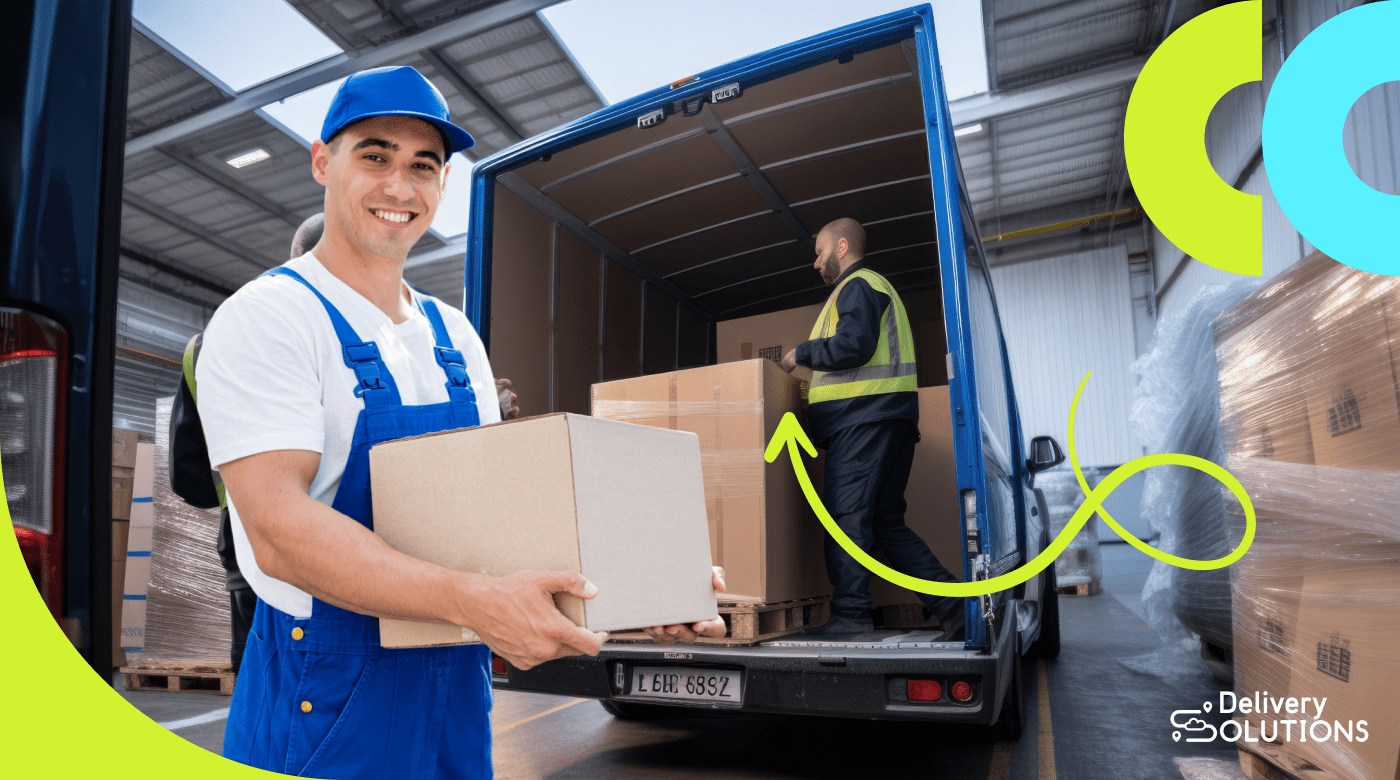
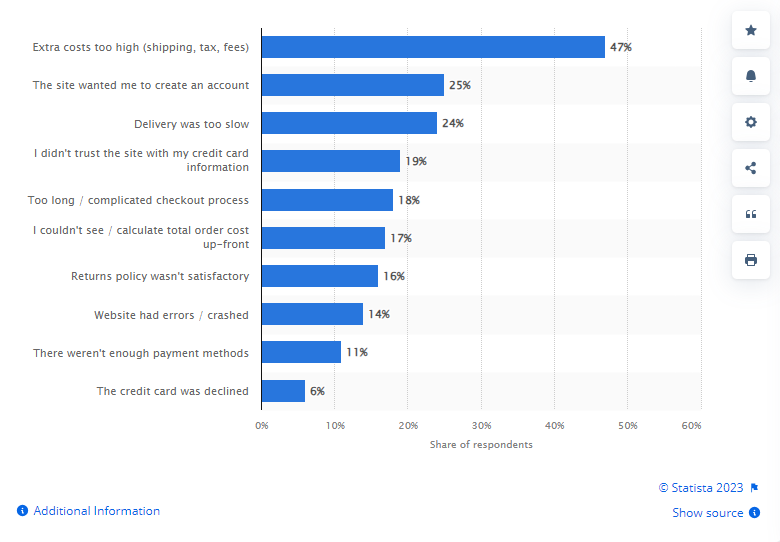 (
(